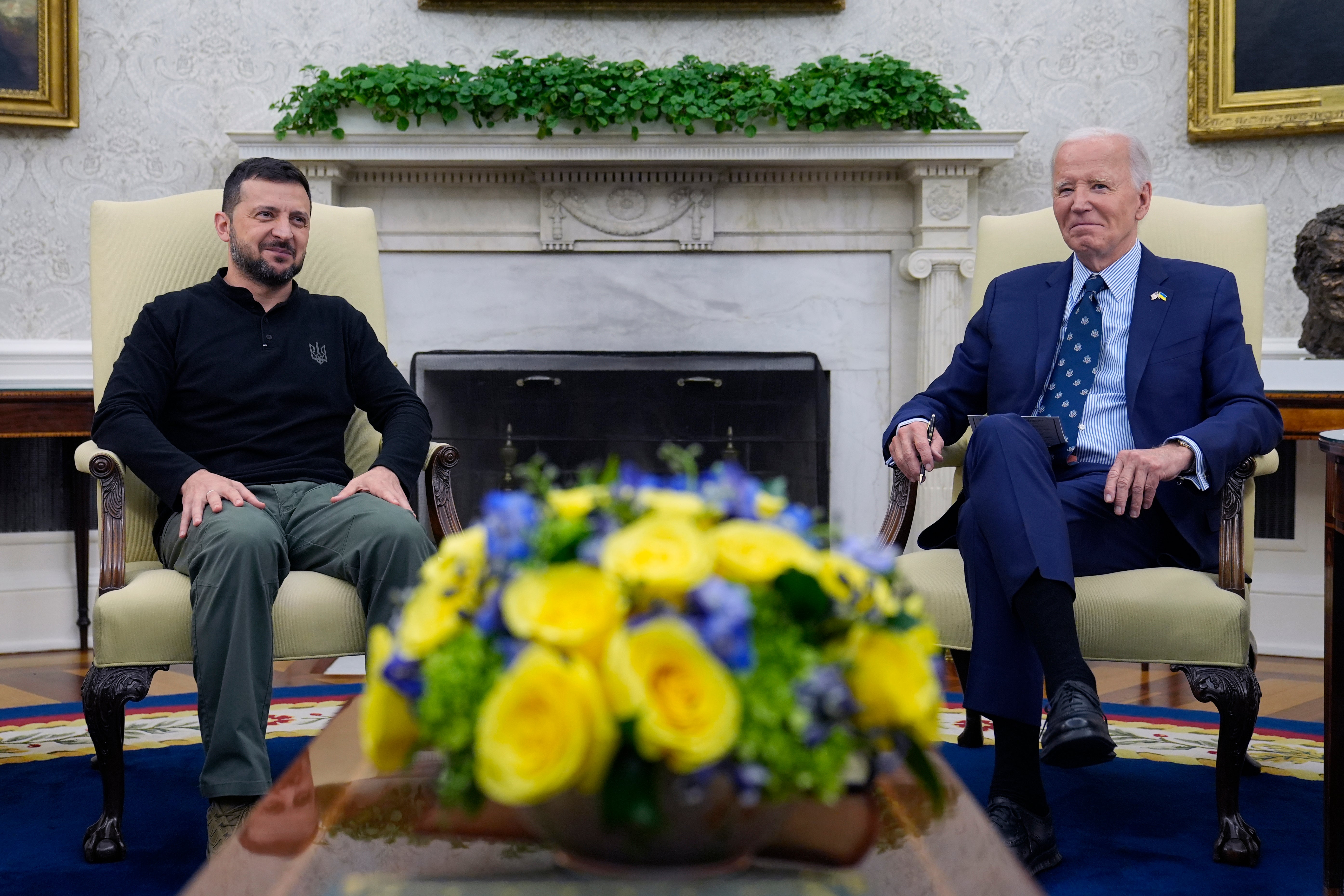The US is giving Ukraine billions more in weapons. Here's how they will help
The Biden administration has announced its latest infusion of more than $2.7 billion in weapons for Ukraine and the promise of billions more

Your support helps us to tell the story
From reproductive rights to climate change to Big Tech, The Independent is on the ground when the story is developing. Whether it's investigating the financials of Elon Musk's pro-Trump PAC or producing our latest documentary, 'The A Word', which shines a light on the American women fighting for reproductive rights, we know how important it is to parse out the facts from the messaging.
At such a critical moment in US history, we need reporters on the ground. Your donation allows us to keep sending journalists to speak to both sides of the story.
The Independent is trusted by Americans across the entire political spectrum. And unlike many other quality news outlets, we choose not to lock Americans out of our reporting and analysis with paywalls. We believe quality journalism should be available to everyone, paid for by those who can afford it.
Your support makes all the difference.The Biden administration's latest infusion of more than $2.7 billion in military aid for Ukraine and the promise of billions more will give Kyiv a massive boost in air defenses, but much of the aid is in long-range contracts for weapons that won't be seen on the battlefield for some time.
Included in a $2.4 billion long-term assistance package announced Thursday — just before meetings between Ukrainian President Volodymyr Zelenskyy and President Joe Biden and Vice President Kamala Harris — is another Patriot missile battery and additional munitions for the system.
Patriots are critical air defense systems that the U.S. military uses around the world to protect American forces and allies. It is a high-demand air defense capability, and the U.S. has a limited number of them and the missiles they fire.
The system is being provided through the Ukraine Security Assistance Initiative, which funds longer-term contracts.
An additional $375 million package of more immediate aid also was announced this week, including an undisclosed number of glide bombs equipped with cluster munitions, as well as a wide array of rockets, missiles and artillery. Those weapons are coming through presidential drawdown authority, which allows the Pentagon quickly to pull supplies from its shelves to speed them to Ukraine's front line.
All said, the latest support raises the total amount of weapons and security assistance the U.S. has provided Ukraine to almost $60 billion since Russia invaded in February 2022.
For comparison, the U.S. spent $60.6 billion from 2003 through 2012 to fund Iraq’s security forces and civilian reconstruction, according to the Special Inspector General for Iraq Reconstruction. Of that total, $20 billion went to funding, equipping, providing uniforms for and training Iraq’s security forces.
Here's a look at the latest military aid going to Ukraine:
More immediate weapons
For the first time, the U.S. will send Ukraine the Joint Standoff Weapon — a glide bomb known as JSOW — “to enhance Ukraine's long-range capabilities.” The variant being sent includes cluster munitions, according to U.S. officials.
The U.S. Navy's JSOW is a precision strike air-to-surface weapon with a range of 12 to 63 nautical miles that can be fired by F-16 fighter jets and other aircraft.
The decision to send the JSOW does not, however, answer Zelenskyy's push for more long-range weapons, such as the Army's long-range ballistic missiles called ATACMS, or the authority he seeks to use them to strike deep into Russia.
Use of the JSOW also depends on the ability of Ukraine's forces to fly their fighter jets closer to the border, including to do strikes that could reach farther into Russia. But Russia also has substantial air defense systems.
The package also includes ammunition for High Mobility Artillery Rocket Systems (HIMARS), 155mm and 105mm artillery rounds, Javelin and AT-4 anti-armor systems, armored vehicles, bridging systems, patrol boats and other equipment.
Longer-term support
The vast majority of the aid is funding to get longer-term contracts underway that will keep weapons flowing in the months and years to come. The package includes money to obtain additional air defenses, unmanned aerial systems and air-to-ground munitions. The Defense Department also will get drone components to send to Ukraine to support its own growing capabilities to assemble and manufacture its own systems.
After Thursday's announcement, the U.S. has about $1.67 billion in Ukraine Security Assistance Initiative funds remaining to support longer-term contracts for Ukraine, a sum that Biden pledged he would spend before leaving office in January.
Secretary of State Antony Blinken said the support would help Ukraine produce an additional 10,000 drones over the next six months.
Beyond the additional Patriot battery, Biden said he's also directed the Pentagon to expand its training program to get more Ukrainian pilots flying F-16 fighter jets and is funding training for an additional 18 pilots next year.
Some of the student pilots — the most advanced, who had previous fighter jet experience — have flowed through a National Guard base in Arizona after getting English-language training. That's needed because all of the interfaces on the F-16 are in English. The first class of those pilots graduated from the course and returned to Ukraine earlier this year.
Late last month, an F-16 that Ukraine received from its Western partners crashed during a Russian bombardment and killed the pilot.
Other Ukrainian aviators who only have basic flying skills have started under programs with partner nations to build up their experience.